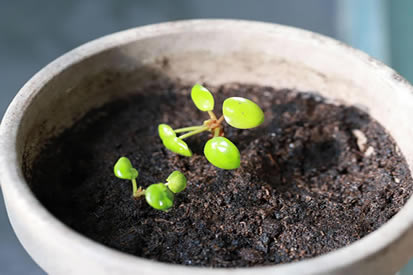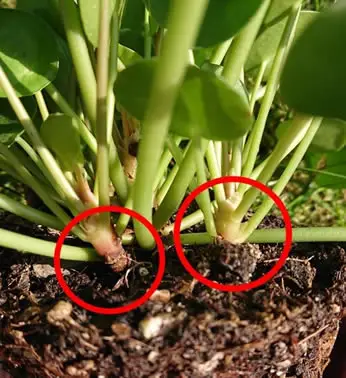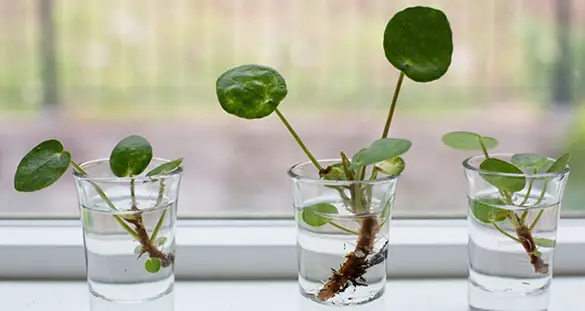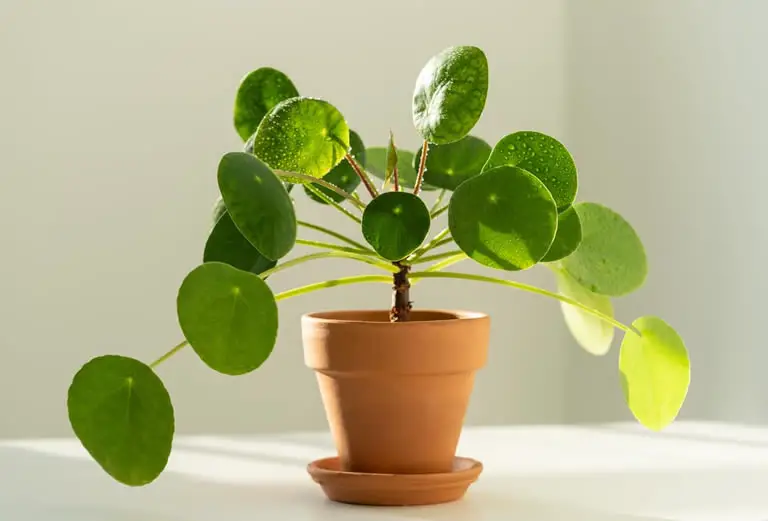The Chinese Money Plant (Pilea peperomioides) is one of the most rewarding plants to propagate. Known for producing a constant stream of baby offshoots, it practically multiplies itself. Whether you’re growing new plants for your own space or passing them on to friends, Pilea propagation is fast, easy, and super satisfying.
Let’s walk through everything you need to know.
Table of Contents
- Pilea peperomioides
- Best Time to Propagate: Spring and Early Summer
- Propagating Pilea from Offsets: The Simplest Method
- Propagating in Water: Great for Rootless Pups
- Propagation by Stem Pups: Snip and Grow
- Propagation in Pots: Create a Full, Bushy Look
- Outdoor Propagation: Only in Warm Weather Zones
- Caring for New Plants: Light, Warmth, and Patience
- Final Thoughts
Pilea peperomioides
Native to the mountainous regions of Yunnan, China, Pilea peperomioides is a compact, upright plant with pancake-shaped leaves perched on long petioles.

It belongs to the Urticaceae family and grows quickly under the right conditions, producing pups from the soil and even directly from the stem.
Because it’s so generous with its offshoots, the Chinese Money Plant is often called the “Friendship Plant,” and it’s one of the most commonly shared houseplants around the world.
Best Time to Propagate: Spring and Early Summer
For best results, propagate during the growing season—especially early spring through early summer.
This gives your pups or cuttings the warm light and longer days they need to take off quickly.
Propagating Pilea from Offsets: The Simplest Method
Most Pilea plants will grow pups (baby plants) from their base or roots.
Once these babies are 2–3 inches tall and have a few of their own leaves, you can safely separate them from the mother.

Use a clean knife to gently remove the pup, including some attached roots if possible.
If it doesn’t have roots yet, that’s okay—it can still be rooted separately.
Plant the pup in a small pot filled with lightly moistened, well-draining soil.
Keep it in bright, indirect light and mist or water lightly until you see new growth, which means roots have formed.
Propagating in Water: Great for Rootless Pups
If your pup doesn’t come with roots, you can start it in water.
Place the baby Pilea in a glass of clean water with just the base submerged—don’t let any leaves touch the water.
Put the glass somewhere bright and warm but out of direct sunlight.
Change the water every few days to prevent stagnation.
Bonus Tip: Add a drop or two of a gentle liquid fertilizer (like 10-10-10 like this one) diluted to one-tenth strength to support the cutting during root growth.
Just don’t overdo it—more isn’t better.

Once the roots are about 1–2 inches long, pot the plant in soil and begin regular care.
Propagation by Stem Pups: Snip and Grow
Sometimes Pilea produces babies right on the stem rather than from the base.
These are a little trickier to remove, but still very easy to grow.
Snip off the stem pup with a clean, sharp knife or scissors and root it in water or soil the same way you would a basal offset.
These often root just as easily, especially during spring and summer.
Propagation in Pots: Create a Full, Bushy Look
To grow a fuller Pilea, you can replant pups directly into the same pot as the mother plant.
Tuck two or three around the base and let them grow into a dense, rounded arrangement.
You can also group multiple pups together in one pot to create a lusher plant from the start.
This is a great way to turn a single upright plant into a stylish, clustered centerpiece.
Outdoor Propagation: Only in Warm Weather Zones
If you live in USDA zones 10–12, you can grow and propagate Pilea outdoors year-round in a shaded, protected area.
In cooler climates, propagation should be done indoors unless it’s warm and humid outside.
If you’re placing pots outdoors in spring or summer, keep them in a shaded location and bring them back inside before temperatures dip below 55°F.
Caring for New Plants: Light, Warmth, and Patience
Young Pileas like the same care as mature ones—bright, indirect light and lightly moist soil.
Keep them away from cold drafts and don’t fertilize until they’ve developed a few leaves.

Once they’re established, start feeding every 4–6 weeks during the growing season with a gentle liquid fertilizer diluted to half strength.
For a more detailed look at the care needs of this little succulent read our article Chinese Money Plant Care: How to Grow the Quirky, Coin-Shaped Pilea Indoors and Out.
Final Thoughts
Propagating Pilea peperomioides is one of the easiest and most joyful ways to grow your plant collection.
With minimal effort, a single plant can give rise to an entire family of baby Money Plants.
Whether you’re gifting them, grouping them, or just watching them grow, there’s something especially rewarding about watching a pup turn into a thriving plant of its own.

